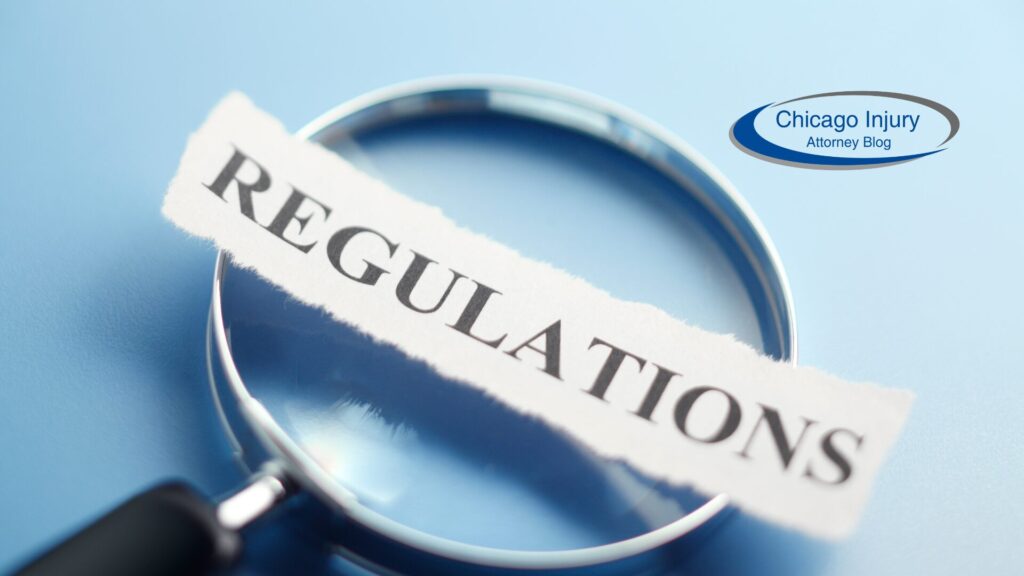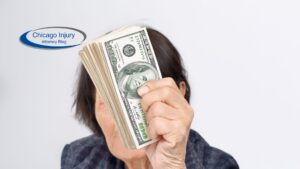Consumer safety is a crucial aspect of our daily lives, especially when it comes to the products we use. Mass torts play a significant role in shaping product regulations and ensuring that consumers are protected from harm. From landmark cases like asbestos litigation to emerging issues in pharmaceuticals and environmental disasters, mass torts have had a profound impact on the evolution of consumer safety laws. In this article, we will explore the role of attorneys in mass torts, the historical evolution of these cases, regulatory systems for consumer safety, and the challenges and opportunities in mass tort litigation. Stay tuned for expert insights and representative cases that shed light on this important topic.
Consumer Safety and Mass Torts: An Overview
Consumer Safety and Mass Torts: An Overview delves into the intersection of consumer protection and legal actions, specifically focusing on mass tort cases, regulatory implications, and the pivotal role of attorneys in representing plaintiffs in complex litigation.
Consumer safety is paramount in mass tort cases as these legal actions often involve numerous individuals seeking compensation for injuries caused by defective products, pharmaceuticals, or environmental hazards. Ensuring consumer safety not only protects individuals but also holds corporations and manufacturers accountable for negligent practices.
Regulatory challenges in this field are significant, as laws governing consumer protection can be complex and constantly evolving. Attorneys specializing in mass tort cases must navigate these intricate regulations to build strong cases and advocate for their clients effectively.
Understanding Mass Torts Cases
Understanding Mass Torts Cases involves examining legal actions where numerous plaintiffs collectively bring forth claims against one or more defendants, typically linked by a common harm or injury resulting in litigation.
These cases can be highly intricate due to the large number of individuals involved, each having unique circumstances related to the alleged harm. Plaintiffs in mass tort actions often seek compensation for damages such as medical expenses, lost wages, and pain and suffering. On the other hand, defendants facing mass tort claims must navigate complex legal processes to defend against multiple lawsuits simultaneously.
- Plaintiffs play a crucial role in these cases, as their claims collectively form the basis for the litigation.
- Defendants, on the other hand, must devise comprehensive legal strategies to address the allegations brought forth by numerous plaintiffs.
The legal process in mass tort cases can be protracted, involving extensive discovery, pre-trial motions, and potentially lengthy trials. The outcome of these collective litigations can have significant implications not only for the parties involved but also for establishing legal precedents and shaping future regulations.
Impact of Mass Torts on Product Regulations
The Impact of Mass Torts on Product Regulations underscores the influence of mass tort cases on product liability laws, safety regulations, and the adaptation of regulatory systems by agencies like the FDA to ensure consumer protection.
Mass tort cases often trigger revisions in safety standards, leading to stricter regulations and improved oversight in various industries. These cases play a crucial role in highlighting potential hazards and flaws in products, prompting regulatory bodies such as the FDA to take proactive measures in protecting public health. The collaboration between legal authorities, industry stakeholders, and regulatory agencies serves to address product liability issues effectively, ensuring that products meet stringent safety criteria before reaching consumers. Through these processes, consumers are safeguarded from potential harm and companies are held accountable for any negligence or misconduct.
Role of Attorneys in Mass Torts
The Role of Attorneys in Mass Torts encompasses legal professionals navigating the evolving legal landscape, representing clients amidst the litigation wave, and advocating for consumer rights in mass tort actions.
Attorneys play a pivotal role in mass tort cases as they possess the expertise to handle complex legal proceedings efficiently. Their in-depth knowledge of the legal system allows them to provide strategic guidance to their clients, ensuring that their rights are protected during the litigation process.
Through meticulous research, attorneys gather evidence, build strong cases, and negotiate settlements on behalf of affected individuals. Attorneys engage in extensive advocacy efforts, pushing for accountability from corporations and seeking justice for those harmed by defective products or negligent practices.
Historical Evolution of Mass Torts
The Historical Evolution of Mass Torts traces pivotal cases such as asbestos litigation, drug-related lawsuits like Vioxx and Accutane, environmental catastrophe litigations, and emerging trends in product liability for consumer goods.
One of the most significant cases in the history of asbestos litigation was the landmark ruling in Borel v. Fibreboard Corporation, where the court recognized the employers’ responsibility for exposing workers to asbestos. This decision set a precedent for numerous other claims and led to an influx of lawsuits against asbestos manufacturers. Similarly, the Vioxx case involving the pharmaceutical giant Merck raised questions about the transparency of drug safety trials and the regulatory oversight of the industry. Environmental disasters like the Exxon Valdez oil spill and the BP Deepwater Horizon incident have also triggered extensive litigations, prompting discussions on corporate accountability and environmental protection. Product liability issues have gained prominence with faulty consumer products sparking legal battles over defects and safety standards.
Asbestos: A Landmark Mass Tort Case
Asbestos: A Landmark Mass Tort Case delves into the extensive litigation surrounding asbestos exposure, the health repercussions including lung cancer and mesothelioma, and the legal battles fought by affected plaintiffs seeking justice.
It is crucial to understand the devastating impact of asbestos exposure on individuals’ health, particularly the development of life-threatening diseases such as lung cancer and mesothelioma. In these mass tort cases, plaintiffs often share harrowing stories of how their lives have been irrevocably altered by these diseases, attributing their suffering to negligent exposure to asbestos.
- Legal proceedings in asbestos cases can be complex and protracted, involving multiple defendants from asbestos manufacturers to employers who failed to provide safe working conditions.
- Plaintiffs face a challenging journey through the legal system, where they must prove their exposure to asbestos and link it directly to their health conditions to seek compensation.
Pharmaceuticals and Drug-Related Litigation
Pharmaceuticals and Drug-Related Litigation explores the legal battles against pharmaceutical giants over medications like Vioxx and Accutane, highlighting the complexities of drug-related cases and the impact on consumer safety.
Mass tort litigation within the pharmaceutical industry involves cases where numerous plaintiffs collectively bring claims against a common defendant, typically a pharmaceutical company, due to harms caused by a particular drug. In the case of Vioxx, an anti-inflammatory medication manufactured by Merck, the company faced lawsuits alleging a link between Vioxx and cardiovascular risks, leading to its eventual withdrawal from the market. Similarly, Accutane, used for severe acne treatment, faced litigation due to alleged severe side effects like birth defects and inflammatory bowel disease.
The repercussions of such litigations go beyond financial settlements; they raise questions about the accountability of pharmaceutical companies in ensuring the safety and efficacy of their products. These cases also shed light on regulatory oversight and the need for stricter monitoring of drug development, testing, and marketing practices. Consumers are now more vigilant, demanding transparency from pharmaceutical giants and regulatory bodies to prevent similar incidents that compromise public health and trust. The legal battles surrounding Vioxx and Accutane serve as cautionary tales, urging stakeholders to prioritize safety and ethics in the pharmaceutical industry.
Environmental Disasters and Mass Tort Law
Environmental Disasters and Mass Tort Law examines legal actions arising from catastrophic events like the Deepwater Horizon oil spill, the impacts on businesses, economic losses, and the legal recourse available to affected parties.
These environmental disasters often result in significant economic repercussions for businesses operating in the affected regions. The Deepwater Horizon oil spill, for example, led to extensive environmental damage, loss of marine life, and severe financial implications for numerous industries. In such cases, businesses may face lawsuits, regulatory fines, and reputational damage, along with the pressing need for environmental remediation efforts. The legal responsibilities of businesses in the aftermath of environmental disasters involve compliance with environmental regulations, compensating affected parties, and contributing to restoration initiatives.
Emergence of Product Liability in Consumer Products
The Emergence of Product Liability in Consumer Products scrutinizes the increasing legal actions related to product defects, medical devices malfunctions, and vaping-related illnesses, highlighting the evolving landscape of consumer product liability.
In recent years, there has been a significant uptick in product liability cases, with consumers becoming more aware of their rights and willing to pursue legal recourse for any harm caused by defective products. This shift has put pressure on manufacturers to ensure the safety and quality of their offerings, especially in industries like medical devices where malfunctions can have severe consequences for patients.
The rise of vaping-related illnesses has added a new dimension to the discussion around consumer product safety. With concerns about the health risks associated with vaping, regulators are closely monitoring the industry and taking steps to protect public health.
Regulatory Systems for Consumer Safety
Regulatory Systems for Consumer Safety focus on the oversight mechanisms implemented by regulatory bodies like the FDA to ensure product safety, accountability of manufacturers, and adherence to stringent regulations.
These frameworks play a crucial role in protecting consumers from potential harm caused by unsafe products on the market. The Food and Drug Administration (FDA), for example, is a key player in this landscape, setting the standards and conducting rigorous assessments to approve products for public use.
One of the core missions of the FDA is to evaluate the safety and efficacy of various consumer products, ranging from food and drugs to medical devices and cosmetics. By conducting inspections, testing samples, and monitoring adverse events, the FDA enforces strict safety measures to ensure that products meet the required standards before they reach consumers.
Ensuring Safe Foods and Medical Products
Ensuring Safe Foods and Medical Products entails the stringent regulatory processes enforced by the FDA to monitor food and medical product safety, emphasizing preventive controls and recall procedures in safeguarding public health.
The FDA plays a crucial role in establishing and enforcing standards that manufacturers of medical devices must meet to ensure the safety and efficacy of these products. Medical devices undergo rigorous evaluations to comply with regulations, including performance testing, quality control assessments, and risk management analyses. If any risks are identified post-market, the FDA has recall protocols in place to swiftly remove the affected products from circulation, preventing harm to consumers and promoting public confidence in the regulatory framework.
Tort Liability’s Role in Food and Medical Product Regulation
Tort Liability’s Role in Food and Medical Product Regulation illuminates how legal accountability through tort law influences product safety, cost implications, and the importance of preventive controls to mitigate liabilities.
One significant aspect of tort liability is that it acts as a deterrent for manufacturers and producers to ensure their products meet safety standards, as failing to do so could result in costly lawsuits and damage to their reputation. This legal framework incentivizes businesses to implement preventive controls proactively, reducing the likelihood of potential harm occurring to consumers.
Global Perspectives on Product Liability
Global Perspectives on Product Liability delves into the diverse approaches across countries towards consumer rights, legal strategies, and public awareness campaigns to enhance accountability and protect consumers.
When examining international perspectives, one finds that different countries have varying legal frameworks in place to address product liability issues. For instance, some regions prioritize strict liability, holding manufacturers accountable regardless of fault, while others follow a negligence-based approach. Understanding these diverse legal systems is crucial for companies operating on a global scale to ensure compliance and mitigate risks.
Initiatives such as the United Nations Guidelines for Consumer Protection play a significant role in harmonizing consumer rights and promoting fair business practices worldwide.
Challenges and Opportunities in Mass Tort Litigation
Challenges and Opportunities in Mass Tort Litigation navigate the intricate landscape of legal hurdles and prospects within mass tort cases, emphasizing the importance of regulatory compliance and strategic legal maneuvers.
Mass tort litigation represents a complex field where multiple parties come together due to shared harm from a defective product or negligent behavior. These cases often involve a large number of plaintiffs seeking compensation against a common defendant or group of defendants, leading to intricate legal proceedings and extensive documentation.
- Regulatory compliance within mass tort cases is paramount, as adherence to legal guidelines and procedural requirements is crucial for the success of these litigations. Attorneys must navigate through a web of state and federal regulations, ensuring that each step taken adheres to the prescribed norms.
Forward-Thinking Approaches in Mass Torts
Forward-Thinking Approaches in Mass Torts delve into innovative strategies such as negotiations, settlements, and preemptive measures to address future claims, reflecting the ongoing legal advancements in mass tort litigation.
These tactics aim to streamline the resolution process and foster collaboration between plaintiffs and defendants. By leveraging mediation and arbitration, parties can often find mutually beneficial solutions that save time and resources. The emphasis on structured negotiations not only expedites settlements but also allows for a more tailored approach to addressing individual claims. Considering future claims during current proceedings can help parties anticipate potential issues, thereby preemptively resolving disputes and mitigating risks.
Practical Concerns for Businesses
Practical Concerns for Businesses underscore the financial implications of mass tort litigations, the environmental damages incurred, and the liability attributed to responsible entities within the business landscape.
When businesses find themselves entangled in mass tort litigations, they face a myriad of challenges that transcend mere financial burdens. The economic repercussions can be far-reaching, leading to substantial losses and disrupting normal business operations. The environmental impacts cannot be ignored, as companies may be held accountable for damages caused to ecosystems and communities. Understanding the complexities of liability considerations is paramount, as determining the responsible parties requires meticulous analysis of each entity’s involvement and culpability.
Navigating Regulatory Compliance
Navigating Regulatory Compliance involves adhering to safety measures, ensuring accountability, and addressing legal proceedings in both federal and state courts to maintain regulatory compliance within mass tort litigations.
Compliance with safety protocols is a critical aspect of mass tort litigation, as ensuring the safety of consumers or workers affected by harmful products or practices is paramount. Responsible entities must uphold accountability measures to navigate the complexities of regulatory standards.
The intersection of federal and state court jurisdictions adds layers of intricacy to the legal landscape of mass tort cases. Understanding the differences in procedural rules and compliance requirements across jurisdictions is vital for legal professionals guiding clients through these challenging litigations.
Expert Insights and Representative Cases
Expert Insights and Representative Cases present invaluable perspectives from legal professionals, advancements in legal strategies, the impact of class action lawsuits, and the role of scientific evidence in shaping mass tort litigations.
These insights delve deep into the complexities of mass tort scenarios, shedding light on the intricate web of laws, regulations, and precedents that govern such cases. With a focus on advocacy and justice, legal professionals navigate the intricate landscape of mass tort litigations, striving to uphold the rights of the affected individuals. The evolution of legal strategies in mass tort cases continues to redefine the boundaries of class action lawsuits, offering a platform for collective redress and accountability. The significance of scientific evidence cannot be overstated, as it serves as a pillar of credibility and validity in establishing causal links between harmful products and the resulting damages.
Frequently Asked Questions
What is consumer safety and how do mass torts shape product regulations?
Consumer safety refers to the measures and regulations put in place to protect consumers from harm or injury caused by products or services. Mass torts, which are lawsuits involving a large number of people injured by the same product, can shape product regulations by highlighting safety concerns and leading to changes in the way products are designed, manufactured, and marketed.
What are some examples of mass torts that have shaped product regulations?
Some notable examples include the lawsuits against asbestos manufacturers, which led to stricter regulations on the use of asbestos in products, and the lawsuits against tobacco companies, which resulted in warning labels and restrictions on advertising.
How do mass torts benefit consumer safety?
Mass torts not only provide compensation for victims, but also bring attention to safety issues and hold companies accountable for their actions. This can lead to improvements in product safety and ultimately benefit consumers.
What is the role of personal injury lawyers in mass torts and product regulations?
Personal injury lawyers often represent individuals in mass tort cases, advocating for their rights and seeking justice and compensation for their clients. They also play a critical role in shaping product regulations by bringing attention to safety concerns and fighting for stricter regulations to protect consumers.
Are there any laws in place to regulate product safety?
Yes, there are several laws and regulations at the state and federal level that aim to protect consumer safety. These include the Consumer Product Safety Act, the Federal Food, Drug, and Cosmetic Act, and the Occupational Safety and Health Act.
How can consumers stay informed about product safety and potential mass torts?
Consumers can stay informed by regularly checking for product recalls and safety alerts, researching the safety record of products before making a purchase, and staying updated on any ongoing mass tort lawsuits related to products they use. They can also consult with a personal injury lawyer for information and guidance.





